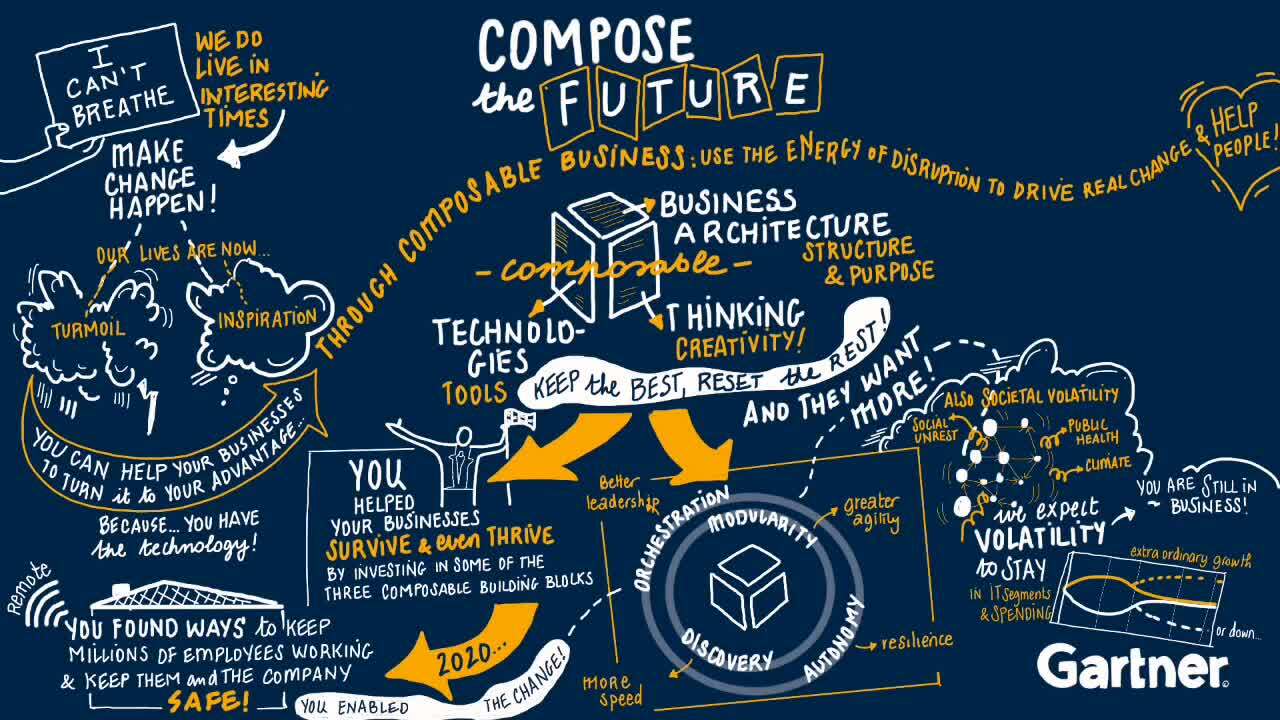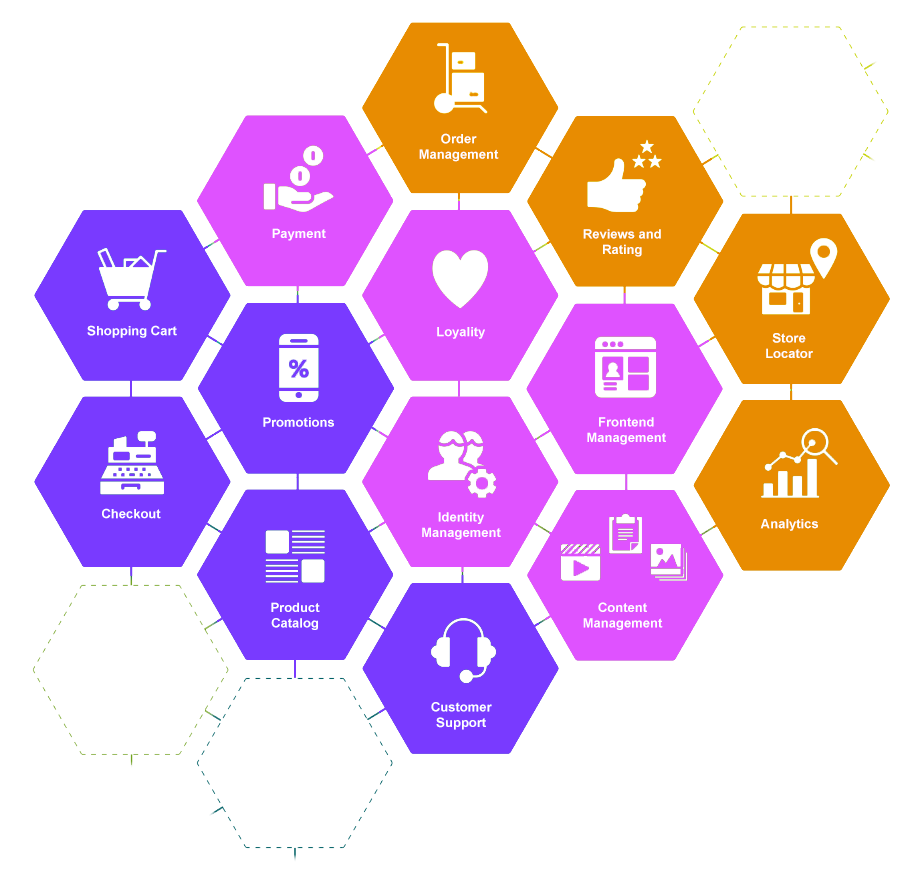The days of monolithic software systems in B2B and sophisticated B2C commerce are over. Find out here where the technology journey is heading and what role cloud-native composable commerce platforms such as Qilin.Cloud play in this.
Back in 2014, Gartner pointed out that flexibility plays a decisive role in the future viability of companies. This refers to the flexibility to adapt to new requirements in real time and to develop resilience in the face of uncertainty. This insight gave rise to the idea of composable business, which focuses on modular structures and the orchestration of technologies.
“Composable Business is a company that consists of interchangeable building blocks. These building blocks enable companies to change quickly.”
tl;dr
- Monolithic software systems are reaching their limits in B2B and demanding B2C commerce in terms of adaptability and scalability
- The constant need for migration projects with traditional systems keeps valuable resources away from innovation
- Unlike monolithic systems, composable commerce platforms are designed for agile change and adaptation
- The MACH-OPC principles of microservices-based, API-first, cloud-native SaaS and headless form the technological basis for composable commerce
- Composable commerce platforms such as Qilin.Cloud are particularly suitable for complex business processes that standard store solutions cannot map
The Evolution of E-Commerce Systems
E-commerce technologies are developing at a rapid pace. While monolithic complete systems dominated digital sales just 20 years ago, we are now seeing a clear trend towards systems that enable greater modularity and flexibility. Rigid, prefabricated solutions are now being replaced by agile structures that allow the best solutions – best-of-breed – to be individually orchestrated for specific requirements.
The reasons for this development are obvious: most of the leading e-commerce solutions that still dominate the market today were developed decades ago. At a time when the demands on the flexibility and adaptability of digital commerce were not as high as they are today. So it’s no wonder that such systems, even if they claim to be composable, have their limits.
Monolithic systems are generally not designed for change. As a result, innovations can only be implemented slowly and with considerable effort. Peak loads during operation cannot be flexibly absorbed because the system lacks scalability. In order to guarantee an optimal shopping experience at all times, more server capacity is required, which leads to costly overcapacity during normal operation.
Further disadvantages of monolithic systems result from the dependency on the provider, who determines the rhythm and scope of software updates. On the one hand, updates are often of no business benefit, but still cost a lot of money. On the other hand, companies often wait a long time for important innovations that are urgently needed for competitive e-commerce – both negative consequences of vendor lock-in.
Last but not least, monolithic e-commerce systems can be very complex and costly to operate and develop. The more complex and individual the business, the higher the total cost of ownership (TCO) for technologies that are not designed for change and adaptation to new requirements. Incidentally, this also applies to monolithic systems in which the front end and back end are decoupled according to the headless principle.
“With monolithic e-commerce systems that are not designed for change and adaptation, the migration of new functions and processes takes up 20-50% of development resources.”

Advantages of a MACH-OPC-based Composable Commerce Architecture
Gartner defines composable commerce as an architectural approach to digital commerce in which applications are implemented with the help of packaged business capabilities (PBCs). PBCs are software components that represent a clearly defined business capability. Here, too, it is worth taking a closer look, because although PBCs are always modular, they are not necessarily built in a truly modern way, i.e. on the basis of microservices as part of a service-oriented architecture (SOA).
The technological requirements for composable commerce are reflected in the so-called MACH principles:
-
-
- microservices-based,
- API-first,
- cloud-native SaaS and
- headless.
-
Qilin.Cloud raised this approach to the next level with integrating
-
-
- open,
- process-centric and
- composable
-
to its statutes.
Genuine composable commerce platforms support all four principles, because only in combination do they enable companies to flexibly orchestrate best-of-breed solutions and publish mission-critical functions in real time. Qilin.Cloud goes even further and integrated an user- & partner open approach giving the maximum flexibility and security and minimum lock-in effects. Furthermore it’s process centricity reflects the behave of the business where application are created for on the plattform.
In summary, it fair enough to be said that composable commerce platforms based on a MACH-OPC architecture are designed for agile change and adaptation, unlike monolithic systems. This means that innovations can be implemented more quickly and easily. The modular architecture reduces the complexity of the individual system components and therefore also the risk in development, as test routines are less complex and individual components can be easily replaced or added to.
Join the Crowd, Start disrupting e-Commerce, Become a Qilin, Do the Extraordinary – there are a lot of terms, but only one decission:
Start your career at Qilin.Cloud
Example: Managing the buyer journey in B2B and sophisticated B2C with composable commerce
Composable commerce platforms such as Qilin.Cloud are particularly suitable for complex business processes that standard store solutions cannot map or can only map to a limited extent. Such complex processes can be found in B2B and sophisticated B2C in all phases of the buyer journey – from login, search and catalog to shopping cart and checkout. The following graphic shows examples of typical functional requirements.

With a composable commerce architecture, companies are able to add success-critical functions for each phase of the buyer journey in real time or replace outdated ones when requirements change or new opportunities arise through technical innovation. Both best-of-breed components that are available on the market and services developed in-house can be used and combined.
“80-120 channels in the company require a commerce architecture that enables digital capabilities, data and domains to be orchestrated flexibly and in real time.”
Axel Helbig,
Chief Executive Officer
foryouandyourcustomers
When switching from a monolithic legacy system to a composable commerce platform, it is essential not only to rethink technology, but also to transform the company as a whole – organization, processes, data, assets and even culture – in the direction of a composable business. Technology can be an important driver and compass for this transformation process.

Thank you for this post!
With your permission, I will use it in our internal wiki to raise awareness of best-of-breed tech.
In my opinion, our company needs to move to it, but our c-level doesn’t understand it yet. This post will definitely help me to convince them.
Regards,
N. Han
Sure!
We are always happy to hear our work is making someones day better =)
Hello,
I serve as the Lead Architect at a South Korean agency currently engaged in a pivotal project to directly connect our client —a manufacturer of smart home electronics— to the European market through various online marketplaces.
Our challenge is multifaceted, primarily due to the client’s reliance on proprietary software, often running on outdated hardware, alongside some applications we have developed. While we do have access to a limited number of APIs, the quantity falls short of our requirements.
In recent discussions with our client, we have collectively recognized the value of transitioning to a MACH architecture within the next three years. My understanding is that your platform could significantly facilitate this transition, enabling us to develop the requisite applications and connectors more efficiently, thereby reducing both time and costs.
Given that we have already initiated some developments, I am keen to understand how your platform accommodates ongoing projects. Is it advisable to integrate your solutions into our current development cycle, or would it be more strategic to conclude our existing projects before fully committing to a transition supported by your platform?
Your insights on this matter would be greatly appreciated.
Best Regards,
U. Pnor
Hello Mr Pnor,
I realy love to have an talk with you about some more details on your customers project.
It is not only possible to make the movement to a platform like ours while the shift has already started, it is hardly recommend, so your customer do not spend money twice for the same work and increase his time-to-market to even more years.
Would you mind contacting us directly: https://qilin.cloud/contact-us
Please also refer to this discussion – thank you in advance.
Marc Costea
but isn’t this type of architecutre to complex for companies with 5-10 employess?
I mean, the overhead of managing all these created more costs, than its benefits will help us save costs …
Sure, to be honest, small companies, often without own IT departments, or at least the ability for spending the costs on an agency, are more efficient with its previous monolithic structures.
MACH has a huge potential, but also needs at least some people working on it day to day. So its full potential only unfolds, if a certain size is reached.